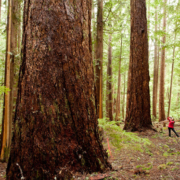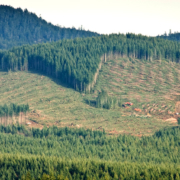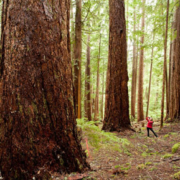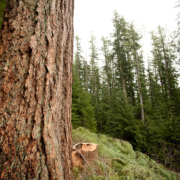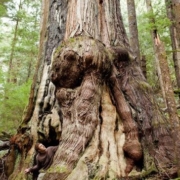Protect the Cameron Valley’s Endangered Forests!
Protect the Cameron Valley’s Endangered Forests!
Save Labour Day Lake, Cameron Valley Firebreak, Cameron Valley Canyon, and Cathedral Grove from Island Timberlands’ logging!
Located near the town of Port Alberni, the Cameron River Valley is home to some of the most significant remnant old-growth stands left on southern Vancouver Island, where almost 90% of the productive old-growth forests have already been logged. These ancient forests in the Cameron Valley are currently threatened by Island Timberland’s logging.
Starting from the headwaters of the subalpine Labour Day Lake, surrounded by endangered ancient yellow cedars and mountain hemlocks in an area heavily used by local recreationists, the waters of the Cameron River start flowing downstream.
In the middle Cameron Valley lies the “Cameron Valley Firebreak”, a 150 hectare remnant tract of mountain-top to valley-bottom old-growth forest – the last of its kind in the valley – that was formerly intended for protection as winter range for Roosevelt elk and deer until the BC Liberal government removed the Tree Farm License in 2004. This exceptional ancient forest, filled with dense stands of enormous coastal Douglas firs and redcedars and with Culturally Modified Trees, has just started being logged by Island Timberlands as of April, 2012.
See: [Original article no longer available]
and https://16.52.162.165/news-item.php?ID=427
Farther downstream, also in the middle Cameron Valley, are old-growth forests in and around the Cameron Valley Canyon, also called the Cathedral Grove Canyon, about 5 kilometers or so from the world-famous Cathedral Grove in MacMillan Provincial Park. This spectacular canyon – a national treasure (see images at https://16.52.162.165/protecting-old-growth-rainforests-to-the-economic-benefit-of-tourism-based-communities/4) – was the center of a public uproar in 2006 when local conservaitonists found the canyon’s largest Douglas firs and cedar trees marked and surveyed by Island Timberlands, and the company later declared that they would not log the area for the time being. Around the canyon farther upstream and downstream, and along adjacent slopes are also major tracts of endangered ancient forests, some of which Island Timberlands have started to log as of April, 2012. Many of these areas are heavily used by black-tailed deer and Roosevelt elk for their winter range.
Finally, in the Lower Cameron Valley is the spectacular Cathedral Grove, the most famous old-growth forest in North America after the California redwoods. Part of Cathedral Grove is protected in MacMillan Provincial Park, where visitors meander among the finest ancient Douglas fir stand on Earth – however, unprotected groves of ancient Douglas firs stretch alongside the highway and up adjacent slopes for a couple kilometers west of the park boundary, which Island Timberlands had planned to log in 2008 until a public uproar staved off their intentions (see https://www.canada.com/vancouversun/news/westcoastnews/story.html?id=a8e02d65-8d2e-401a-8359-12c8d7345e17). These currently unprotected parts of Cathedral Grove also constitute a buffer to the park’s trees, many of which blew down in ferocious winter storms several years ago in part due to increasing exposure to strong winds as a result of nearby clearcuts.
Make YOUR Voice Heard!
Please WRITE a LETTER to the BC Liberal government to:
- Ask Island Timberlands to halt logging in the old-growth forests of the Cameron Valley, as 99% of the old-growth Douglas firs on Vancouver Island have already been logged.
- Help to significantly fund the purchase of the endangered old-growth forests in the Cameron Valley – Cathedral Grove’s unprotected forests adjacent to the park, the Cameron Valley Canyon, the Cameron Valley Firebreak, and Labour Day Lake.
- Establish a $40 million/year BC Park Acquisition Fund, similar to the park acquisiton funds of many regional districts in BC, to purchase endangered ecosystems on private lands across BC for new protected areas.
- Establish a Provincial Old-Growth Strategy to protect the province’s endangered old-growth forests, while ensuring the sustainable logging of second-growth forests and ending the export of raw logs to foreign mills in order to ensure a guaranteed log supply for BC mills.
Write to Minister of Environment Terry Lake at: terry.lake.mla@leg.bc.ca or phone him at 250 387-1187
SUPPORT the local conservationists in Port Alberni at the Watershed-Forest Alliance, who are spearheading efforts to protect ancient forests in the Cameron Valley, to ensure clean water, and to push for sustainable forestry jobs. Contact Jane Morden at: watershedforestalliance@gmail.com
SUPPORT Annette Tanner of the Wilderness Committee’s Mid-Island chapter to also help protect all of Cathedral Grove and the Cathedral Grove Canyon at: wcwcqb@shaw.ca

